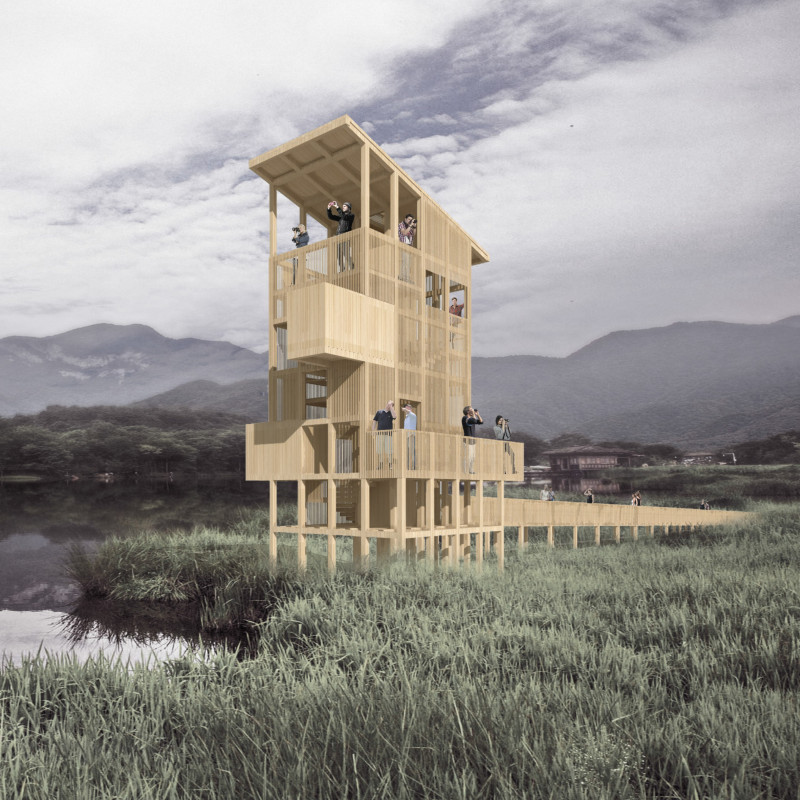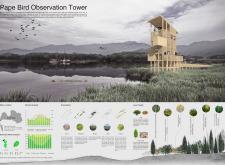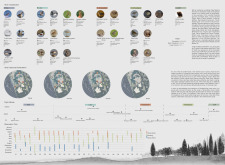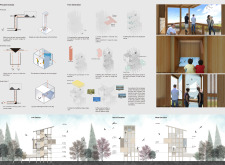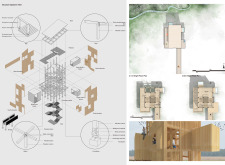5 key facts about this project
### Pape Bird Observation Tower Overview
Located in Pape Nature Park in Latvia, the Pape Bird Observation Tower is designed to facilitate birdwatching and nature observation while harmonizing with the park's diverse ecosystem. Drawing inspiration from optical devices, such as periscopes and viewfinders, the structure aims to enhance the visitor experience by providing innovative observation techniques that encourage engagement with the natural surroundings.
### Spatial Strategy and Interaction
The tower's design incorporates multiple observation platforms at varying heights, allowing visitors to experience panoramic views of the park’s landscape and bird populations. Large open spaces and expansive windows increase transparency, fostering a connection between the interior of the tower and the external environment. The careful arrangement of observation areas aims to minimize disturbance to wildlife, enabling birdwatchers to participate in a more immersive experience while observing from afar.
### Materiality and Sustainability
Constructed primarily from locally sourced timber, including oak and pine, the tower emphasizes sustainability and ecological sensitivity. Oak is selected for its structural integrity, while pine offers aesthetic versatility. Steel connectors provide stability, ensuring the durability of the structure, and waterproof materials are employed in areas vulnerable to moisture. This strategic choice of materials not only reinforces the building’s connection to its natural context but also aligns with broader sustainability principles.
The integration of bridges and stairways enhances accessibility within the structure, promoting fluid visitor movement between observation platforms. These design elements collectively create an inviting and user-friendly environment while encouraging appreciation for the local ecosystem and its avian inhabitants.


